2017 BMW R 1200 GS Rallye X Review – BMW’s premium off-road adventure-tourer
By Mark Willis – Images by iKapture
So, an adventure launch? I am happy to admit straight off the bat that I was more than a little anxious in the days leading up to the BMW R 1200 GS Rallye X launch, the most serious Boxer off-roader to have come from the BMW stable since the HP2 Enduro of 2005.
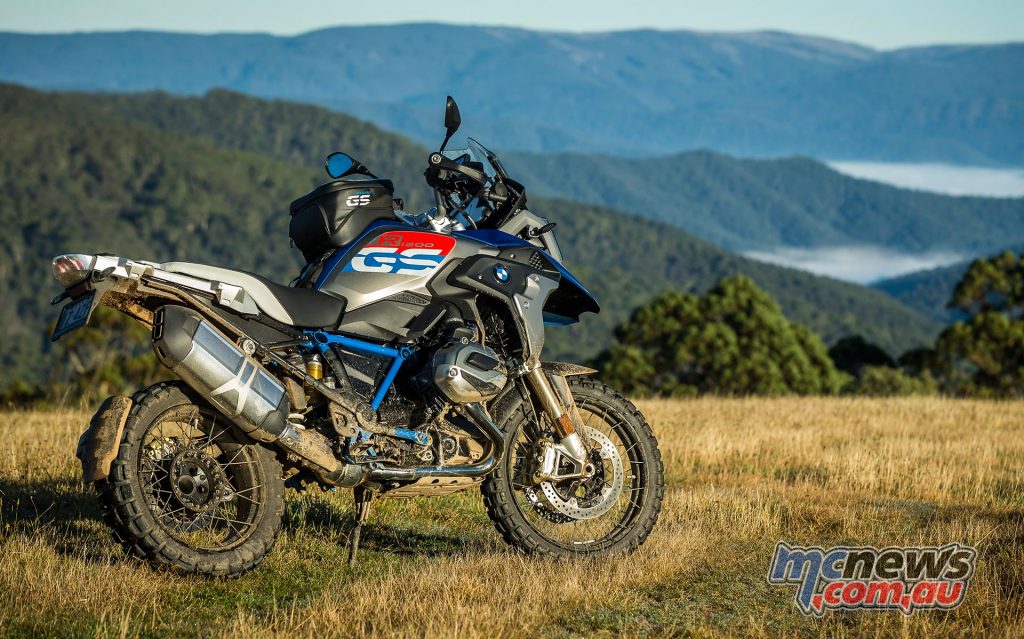
I have had a full motorcycle licence since I was 17, but I am more comfortable cracking 300km/h at the racetrack than riding on the road. On the track we all go the same direction! And there are no idiot car drivers to contend with, just the occasional idiot racer with ambitions bigger than ability. Thus if I were going back to Phillip Island or Eastern Creek to test the boundaries of a 200hp sportsbike I would be far less apprehensive! “Which way does it go and what’s the lap record?” won’t serve me so too well on this two-day launch.
Our journey starts at BMW HQ in Mulgrave Victoria where long term BMW man, Miles Davis, outlines the basic features and changes to the new R 1200 GS Rallye X. Now I must confess I needed to pay attention, because my base knowledge on these BMWs is quite limited, apart from my old man always wanting own one. Unfortunately, he shot through before he had the chance.

The 2017 model line up will see four models in the range starting with standard R 1200 GS at a retail price of $21,850, up to the premium Rallye X at $27,250. Sitting between these models is the standard Rallye at $23,050, while the Tour variant is similarly priced.
One interesting note to point out is just how important the GS is in the sales stakes for BMW Motorad. The GS accounts for 50 per cent of its sales both here and internationally. The prominent difference with the Rallye X model from the other three models in this range is the sports suspension, including more travel and some fancy settings in the Dynamic ESA (Electronic Suspension Adjustment).
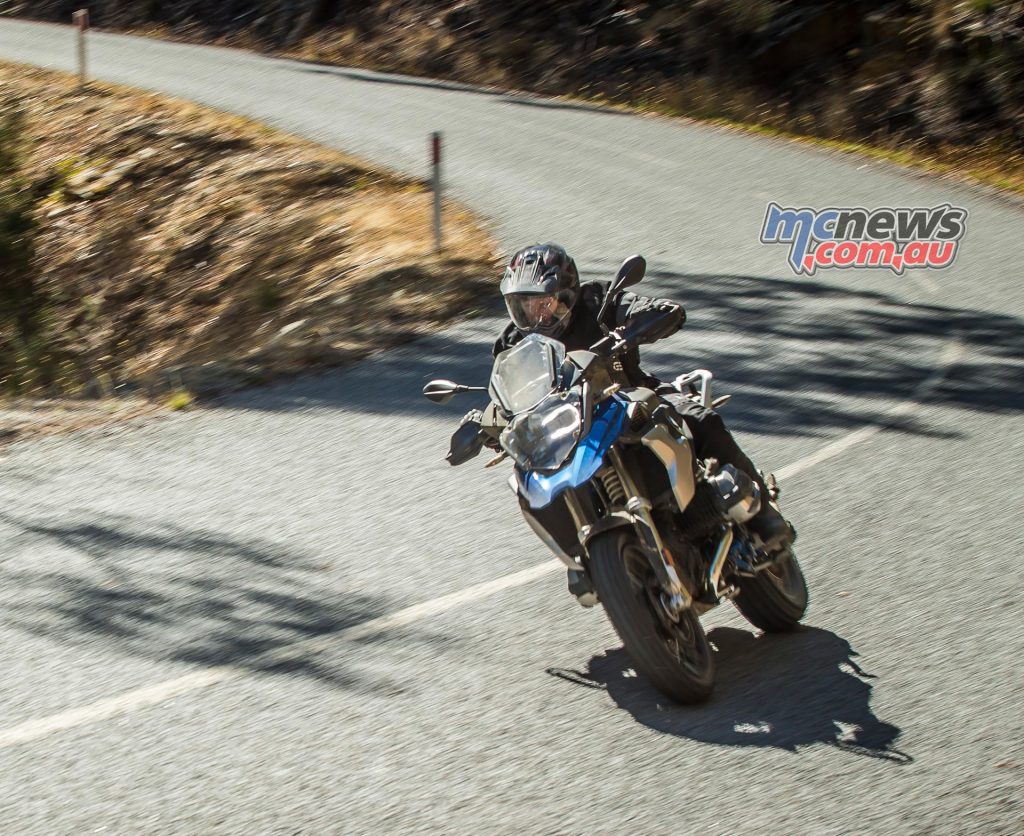
Ray from Held Australia was also good enough to hook me up with some trick gear for this launch at very short notice, and after we all got suited up it was time to hit the road. By this stage the nerves and apprehension had started to turn into adrenaline and excitement for the journey ahead, as we headed up into the Victorian High Country. Although I had no real idea where we were going, I was sure it was going to be a blast.
First impression as we left BMW HQ at Mulgrave was the nice smooth grunt that the opposed twin produces. It pulls from very low rpm, and accelerating up through the gearbox is a breeze with the aid of the Gear Shift Assist Pro, or as us old racers always referred to it, a quick shift.
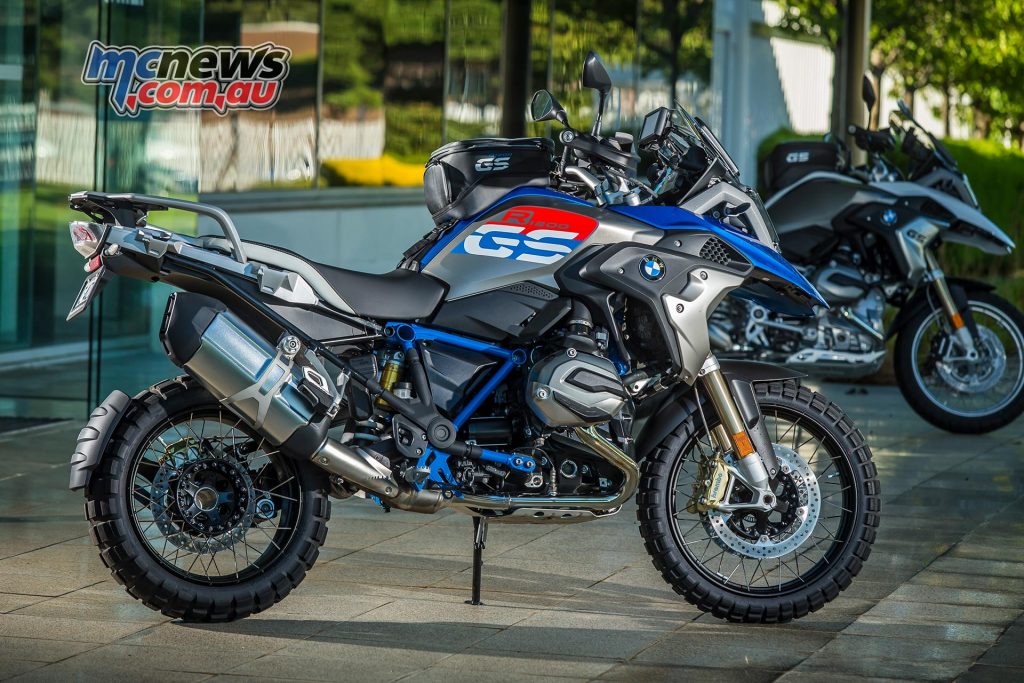
No clutch being necessary for up- or down-shifts is just such a cool feature for motorcycles these days, although once off the tarmac, downshifting with the clutch is almost a necessity.
When downshifting off road when the rear suspension is being heavily taxed, and the load not constant, it can confuse the electronics on the downshift, and lead to a bit of jack-hammering from the rear end. I also found it better using the clutch up-shifting from first and second gear on bumpy or washboard surfaces for the same reason.
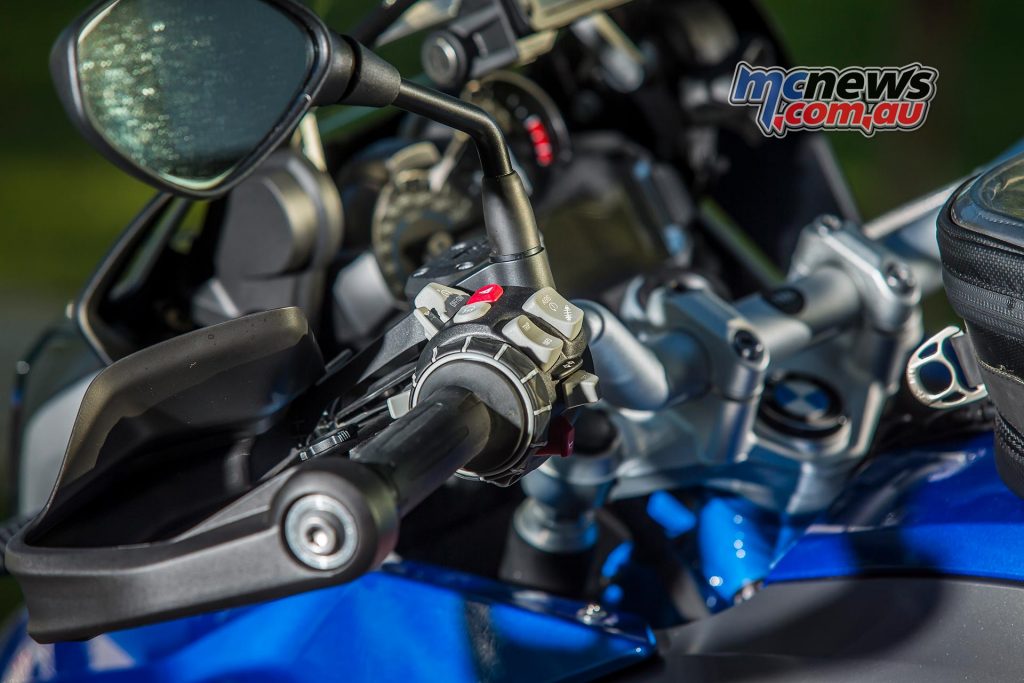
Our first stint on the bike is just the mundane ride of the metropolis but we quickly start to find our way into the twisty spurs above Melbourne. Heated hand grips as a standard feature helped make the brisk conditions a little easier to deal with. There are three different settings for the heated hand grips which makes finding a suitable temperature a breeze. This is all done on the fly, and was a feature I used quite a few times over the two-day ride.
During our first leg, we were able to stop a few times and play with both the suspension and power settings to acquaint ourselves with the options, but it’s not too long before we have our first taste of the dirt, which is the main objective with this Rallye X launch. The focus for this particular model definitely biased towards the more hardcore adventure segment, while there are other new variants that tread the middle ground, or lean more towards the tarmac part of the equation. Check out the BMW Austrtalia website for the R 1200 GS Tour Edition, the regular R 1200 GS, or the top rung big boy R 1200 GS Adventure, with its massive 30-litre fuel tank and all the trimmings.

To start with the roads are just nice open fire trails, and I am quite surprised at how well the BMW feels on the dirt. Standing up on the pegs you could, at times, feel like you’re just man handling a big dirt bike.
Flicking through the vast array of electronics that are available, there is an ample array of settings to suit all conditions and rider abilities. As this is my first foray into the world of Adventure bikes and electronics to this degree it took me a little bit of time to get my head around. I will do my best to explain the three main areas of the electronics. Traction control, ABS and the electronic suspension (Dynamic ESA).
Riding modes
Choose a mode and you get a package that really suits the situation, with each mode having different settings that cover traction control level, ABS, suspension damping and throttle feel (soft or fast response). On the base model GS, you only get Rain and Road mode, so that’s pretty straight forward: Rain for wet; Road for dry roads. With the base spec’ there is no off road specific mode but the rider can easily disable ABS and or ASC if their journey heads seriously off road.
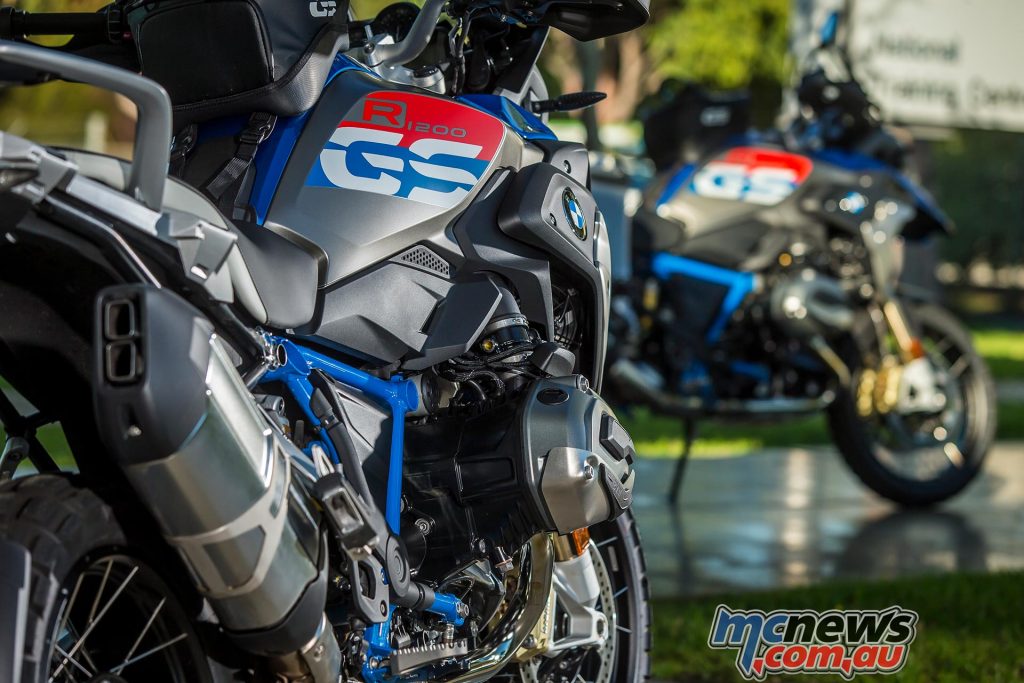
With the option called Riding Mode Pro there are more choices. You can choose to select a mode and ride, or you have the ability to override suspension if you prefer softer or harder damping than the default settings provide.
With riding Modes Pro there are four choices – the standard Rain and Road options plus additional modes Dynamic and Enduro. Dynamic is for the tarmac and Enduro being appropriately named for the dirt riding experience.
In Enduro mode now, ABS and ASC are calibrated for the some slip, so they work better and feel more natural to the rider, when compared to the more sensitive road settings.
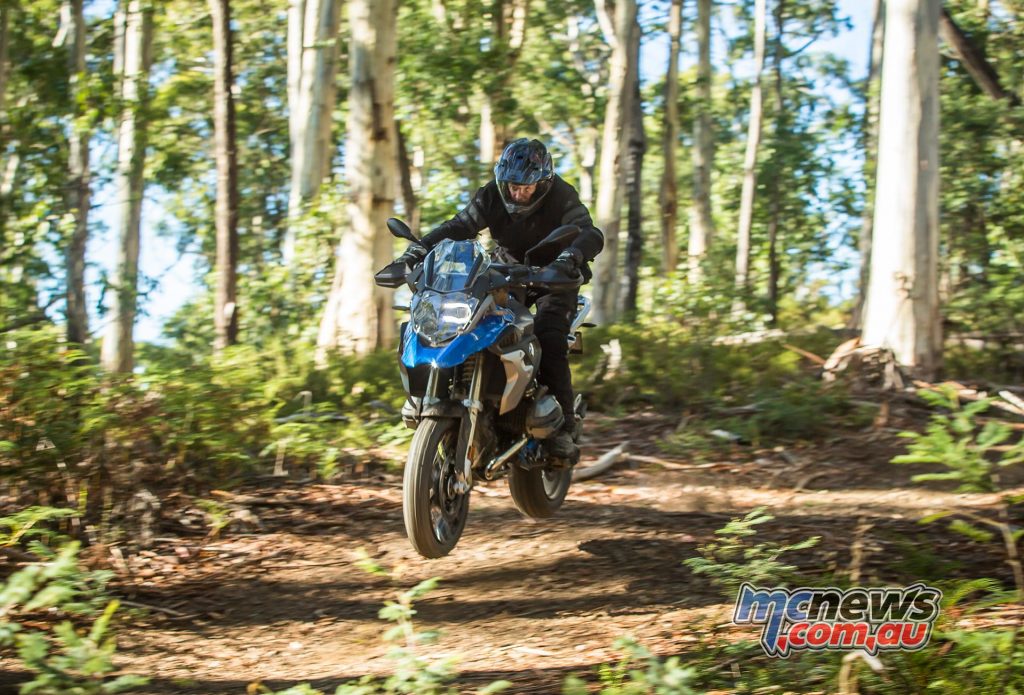
With Enduro mode there is far less need to turn off ABS and TC off road, previously, when it was only calibrated for road it was common to deactivate in the dirt. And if those settings are not enough there is also a coding plug that gives you more freedom to explore the potential of the electronics.
The previous model also had a coding plug that riders can fit to tweak the riding modes. Previously this plug would provide the additional setting called Enduro Pro, where the main difference was ABS being deactivated on the rear brake only. This is something that experienced off road riders prefer, but could be potentially hazardous for people who haven’t ventured off the beaten track too much.
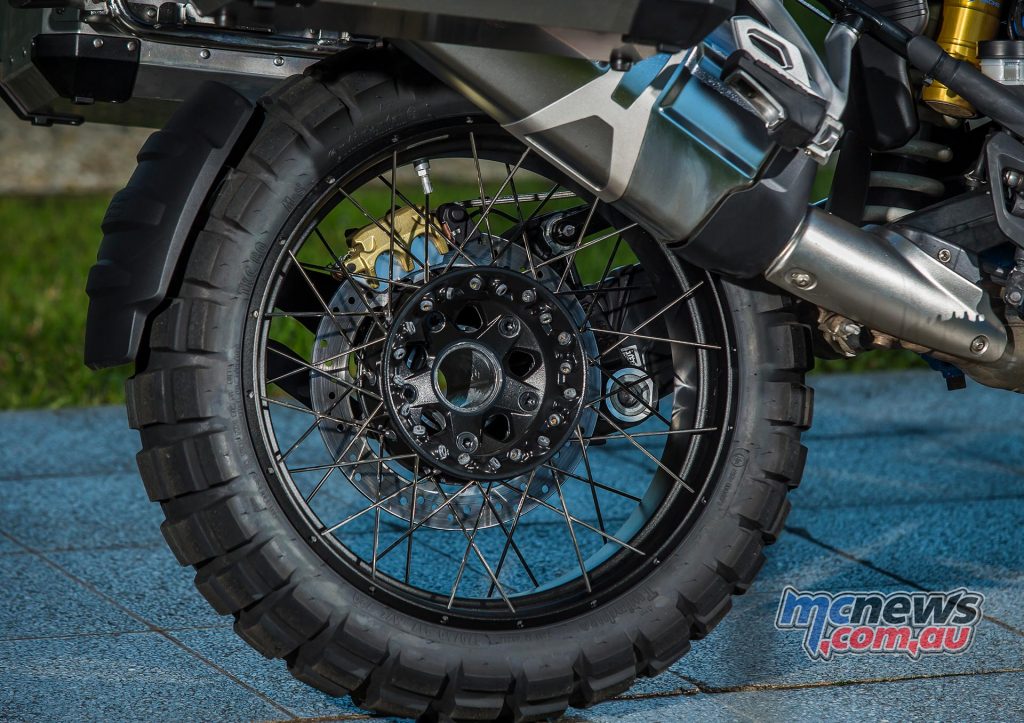
The new model works a bit different, now the coding plug turns Dyamic mode into Dynamic Pro and Enduro to Enduro Pro mode. This allows you to customize the throttle response to your choosing and also the TC. For example I had a Rain mode throttle in Enduro Pro to give me a more progressive feeling on the dirt via a much smoother power delivery.
This allowed me to accelerate smoother on uneven terrain where grip was not at its maximum. You also have the ability with the new “User Mode” to create your own custom mode, almost like a spider chart, formed from all of the various throttle, traction control, ABS and suspension settings, exactly in the combination that you prefer.
Dynamic ESA
The Dynamic ESA is suspension damping that continually adjusts depending on the mode, and many other variables like throttle, brake and lean angle. This feature is a big reason these big bikes feel like they are on rails.
In the Road modes you can also toggle between the Road and Dynamic settings. Road is more casual and comfortable, whereas Dynamic is sporty, firmer and more precise. In Enduro modes the damping is set to Enduro and not adjustable.
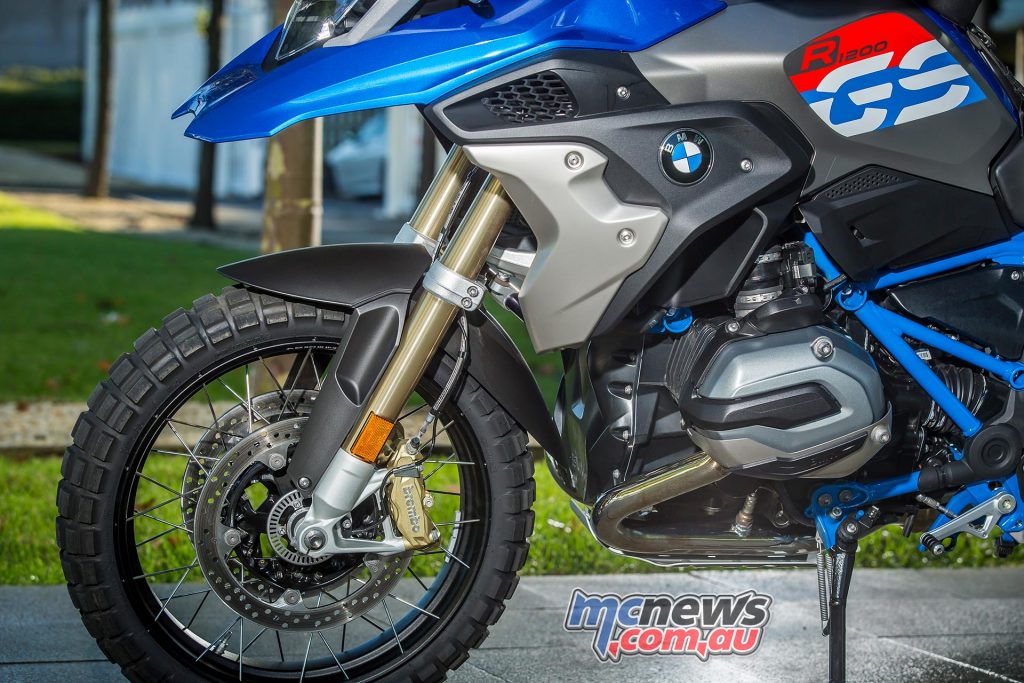
New for the Rallye X alone is the Sports Suspension feature, which not only provides 20mm more travel, but also has some extra off road electronic smarts that provide additional benefits when riding off road.
Previously there was three rear suspension pre-load options, “single rider”, “rider and luggage” and finally “two riders”, where the pre-load was at the maximum for the most load.
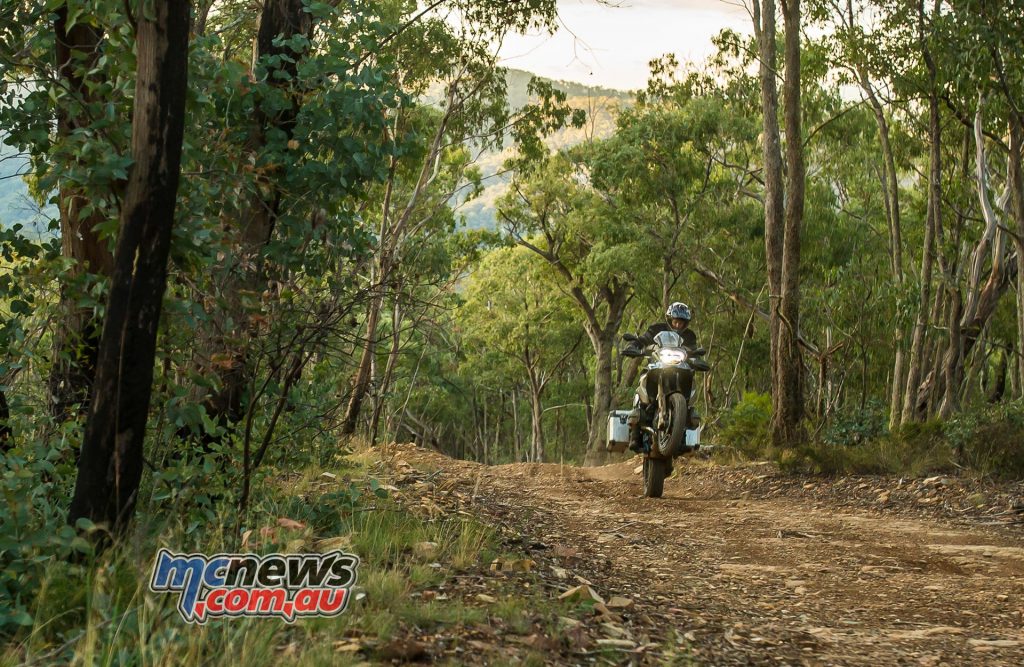
Now we have “single rider”, “auto” and “max”. The main difference here being, in auto mode the pre-load automatically adjusts to the ideal rider sag, which the computer calculates when you sit on the machine. This provides a more precise pre-load setting rather than a pre-determined setting. Once you select Auto, you click into first and ride away, set and forget…
Traction Control & ABS
The traction control works great. In the Enduro Pro mode on the dirt it still allows for some spinning of the rear wheel, without too much intervention from the ECU, especially if your inputs are smooth and precise.
I did also try the Road and Rain mode for shits and giggles on the dirt, and the little traction light basically remains aglow constantly, the ECU desperately trying to limit the rate of wheel spin, without sacrificing too much forward momentum.

This is obviously not that noticeable when the grip levels increase on the tarmac, where these two modes are really tuned for those higher grip levels.
ABS is something that I have personally never really gelled with. Like traction control, I am a little old school, and am constantly adjusting with my wrist and my fingers to find the best level of adhesion. For me, having ABS is like somebody trying to take control out of my hands…

I found this when I was backing the Rallye X into an off camber wet corner on the dirt, and the grip on this particular bend happened to be a lot less than it had been. I started to two wheel drift the big girl into the corner, slowly increasing brake pressure as I progressed, only to have the ABS cut in and the brake lever start to pulsate in my fingers.
The harder I pulled, the less control I had, until the point of no return had been reached, and I had to look for a plan B, which in this instance was the table drain.
It was full of mud, and we came to a nice stop with the wheels half buried. I quickly looked around to make sure nobody saw my rookie error and all was fine, until I went to move the bike. 240kg was not coming out, at least not with my poor excuses for shoulders!
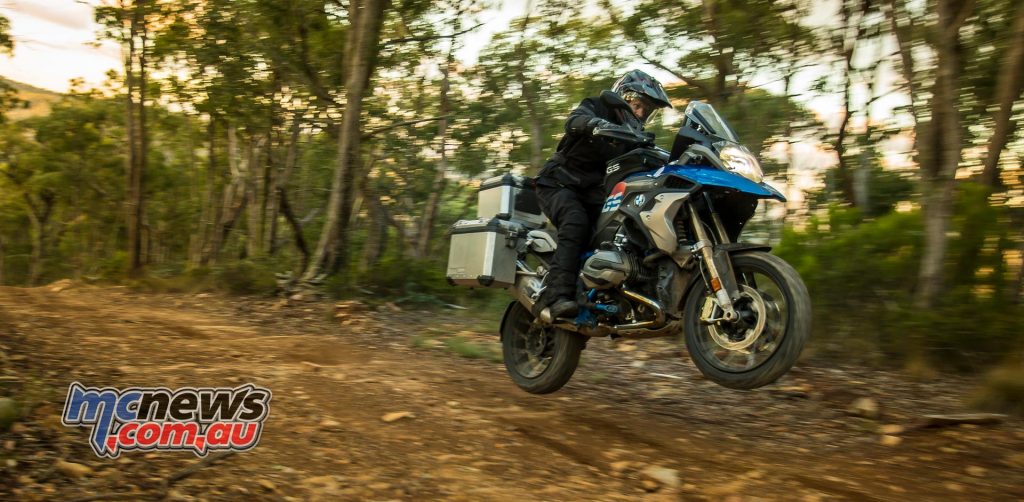
Luckily the “mountain man” Stuart Woodbury was coming along and had no trouble in stopping. The big fella then helped me get the BMW back on the road again. From this moment on the ABS spent more time in the off position. Now this is not to say I think ABS is not good. It’s just for me I prefer to be in control. My missus has always said I am a little bit of a control freak…
(Editors’s Note – Mark is far from your average punter, a few years racing 500cc two-strokes on the Grand Prix circuit, while also taking wins at Bol d’Or and Spa 24 Hour Superbikes races, means he is a little bit special, in many ways… For us ‘sort of normal’ humans, the ABS system are generally much better than us, and can be safely left on, and relied upon when ambitions start to outweigh our talent).
After a great morning exploring the possibilities with this machine, we rolled into the beautiful township of Marysville for lunch. I am having a blast. I thought my little off track experience was safe with Stu, but I could hear him telling everyone about my misfortune before he even had his helmet off… Thanks Stu!
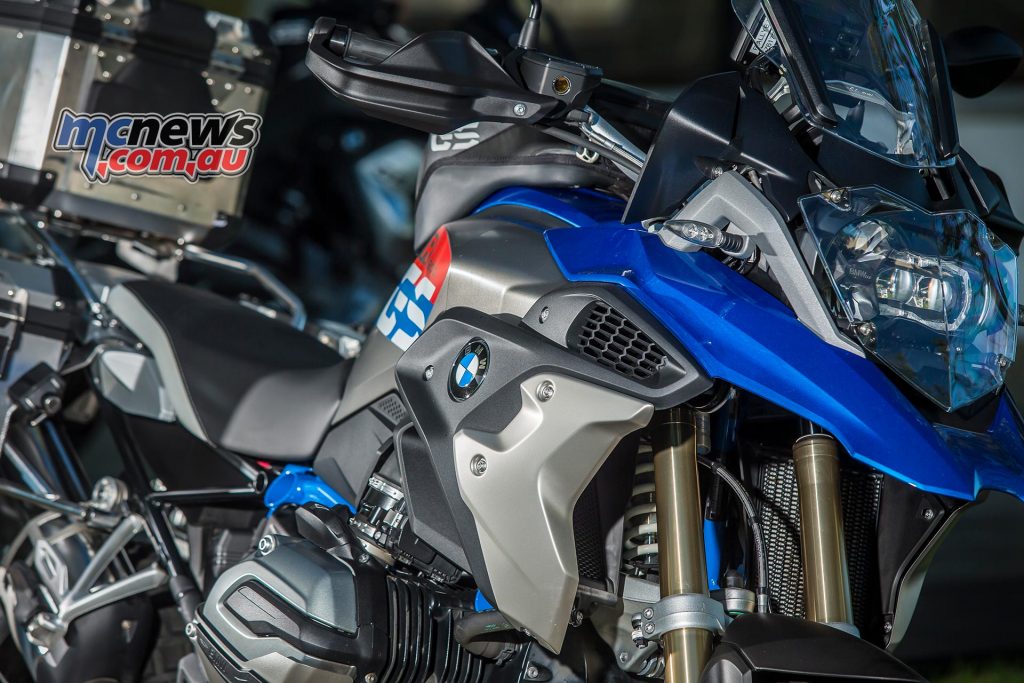
Climbing back aboard the Rallye X after lunch it should also be pointed out that it is a little taller than its siblings, with 20mm more travel and ground clearance, and a seat height of 890mm. This did sometimes feel a little daunting when stopping on uneven ground, these bikes are not easy to stop from falling over once they get a little bit of momentum.
I am speaking with experience on this front, as I sampled picking the BMW up a couple of times. I did manage to get my head around this as the ride went on. It’s no motocross bike when you come to a stop that’s for sure.
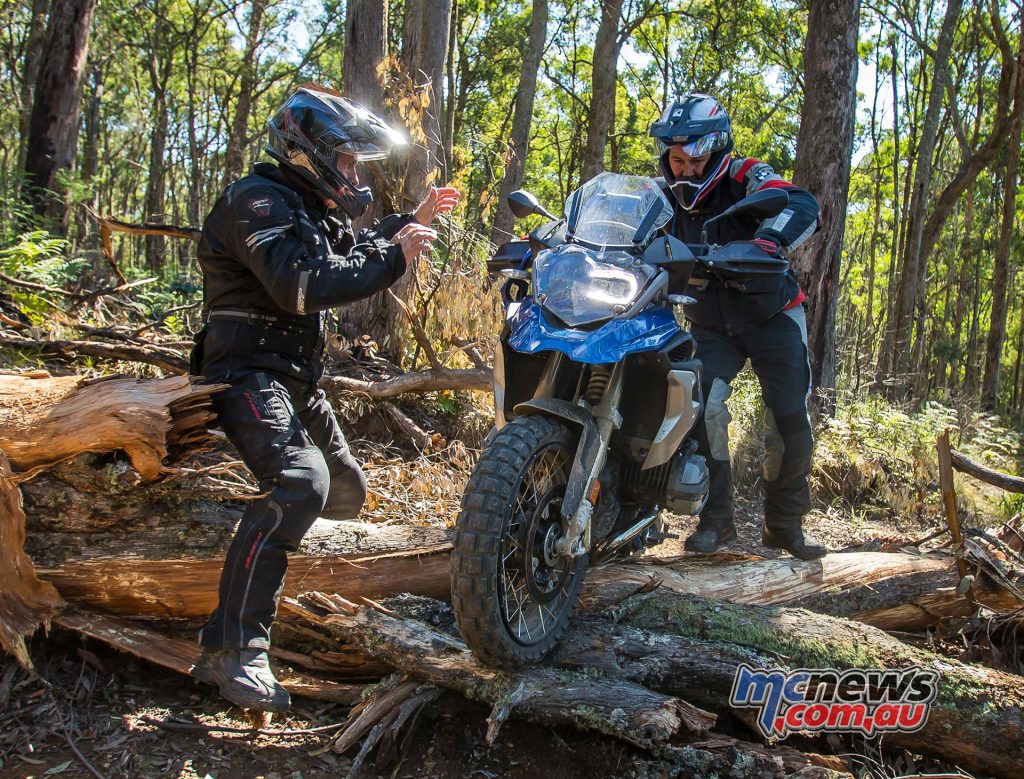
Miles had obviously done a lot of riding up in these hills, and we spent most of the afternoon unsuccessfully trying to find roads we couldn’t go through with this bike – I was amazed by just where you can take the Rallye X. Nothing managed to stop us.
The engine tractors from so low in the rpm that you can basically leave it in second gear, and use that beautiful boxer twin torque to climb just about any hill. The engine can feel like it is on the verge of stalling, however it just motors along, brilliant and oh so smooth.
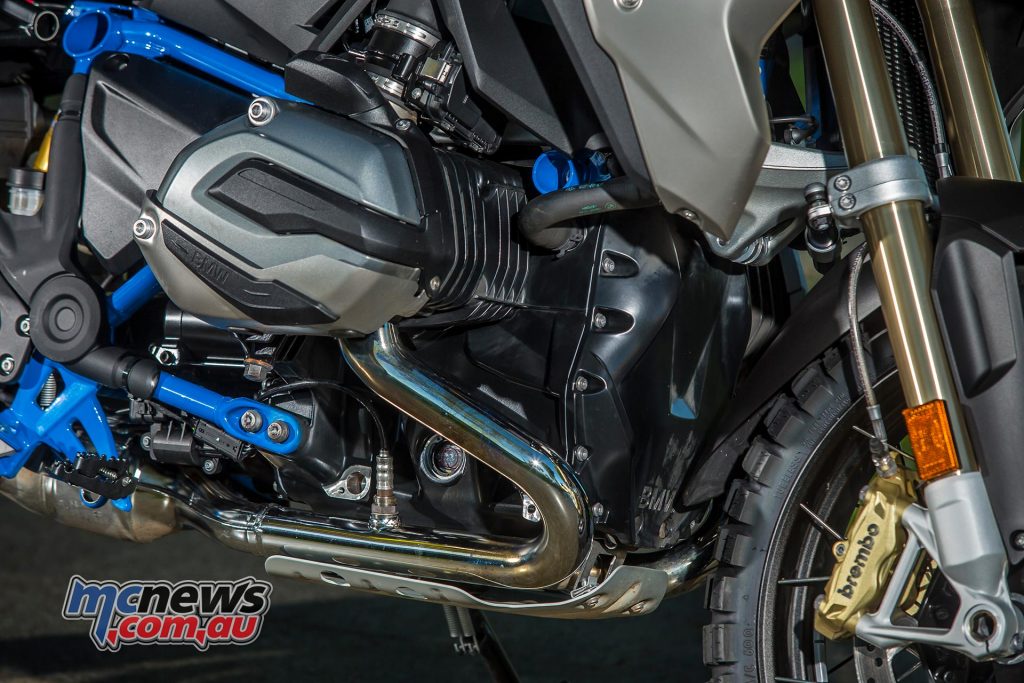
Apart from one section of about six-kilometres of really wet slippery clay, I felt at home and comfortable on the bike all day. On that section of abominous red clay, it wouldn’t matter what bike you were on, grip levels were almost zero. I felt more like a passenger on the bike than the pilot. But we made it through without falling over. I also managed to get through my first water crossing upright and dry, just outside the old gold mining village of Woods Point.
By the day’s end we had been in the saddle for around eight hours, and upon arriving at our accommodation for the night at the famed Gap Getaway just out of Matlock, it felt like we were days away from any form of civilisation. In reality we were only 100km from Melbourne, such is the adventure riding paradise that lies just above Australia’s fastest growing city.
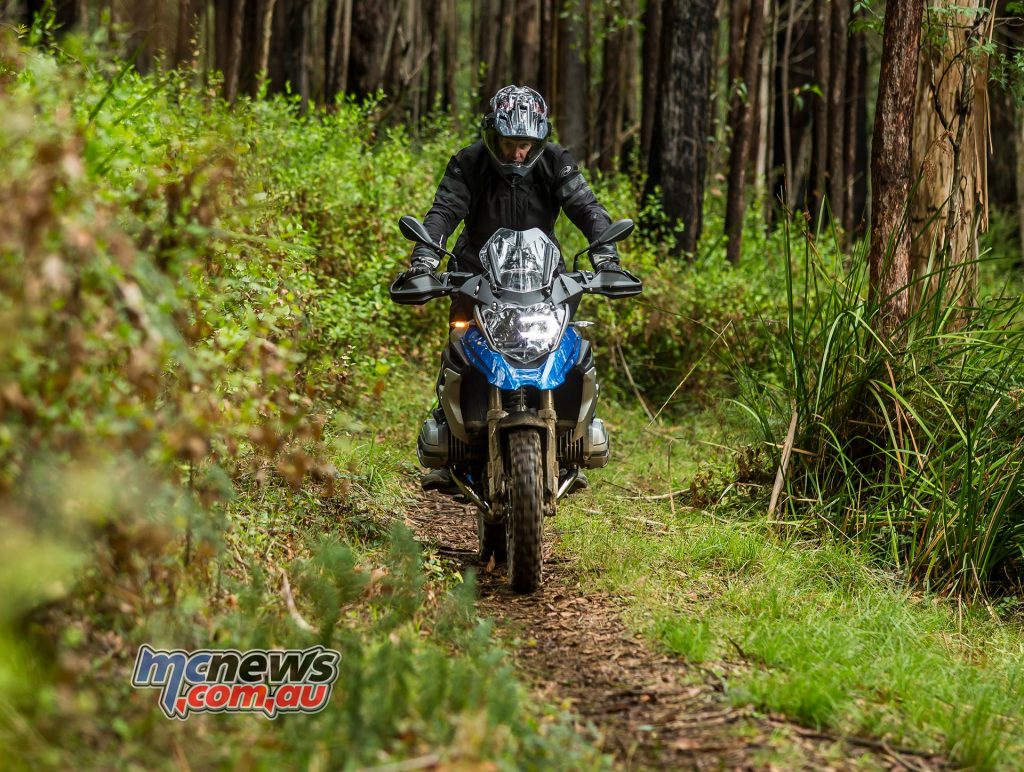
With the bikes refueled, a few cleansing ales and a good night’s rest, by 8am the next morning we were ready to get on the dirt roads again, in what were slightly cooler conditions. We headed straight out onto more dirt roads, and the first main trail we encountered had a great mix of levy banks, tight twisty uphill climbs and a very steep descent that seemed to go on forever, just after we had successfully negotiated the infamous German Spur Track.
The Rallye X took it all in its stride. I said to Miles at the completion of this trail how much I would love to go and do it all again, as after knowing where it goes you could really have a good crack. However Miles made a valid point in informing me how long it would take emergency services to get in there, if something was to go pear shaped. Mental note to self, the bush is not a race track!
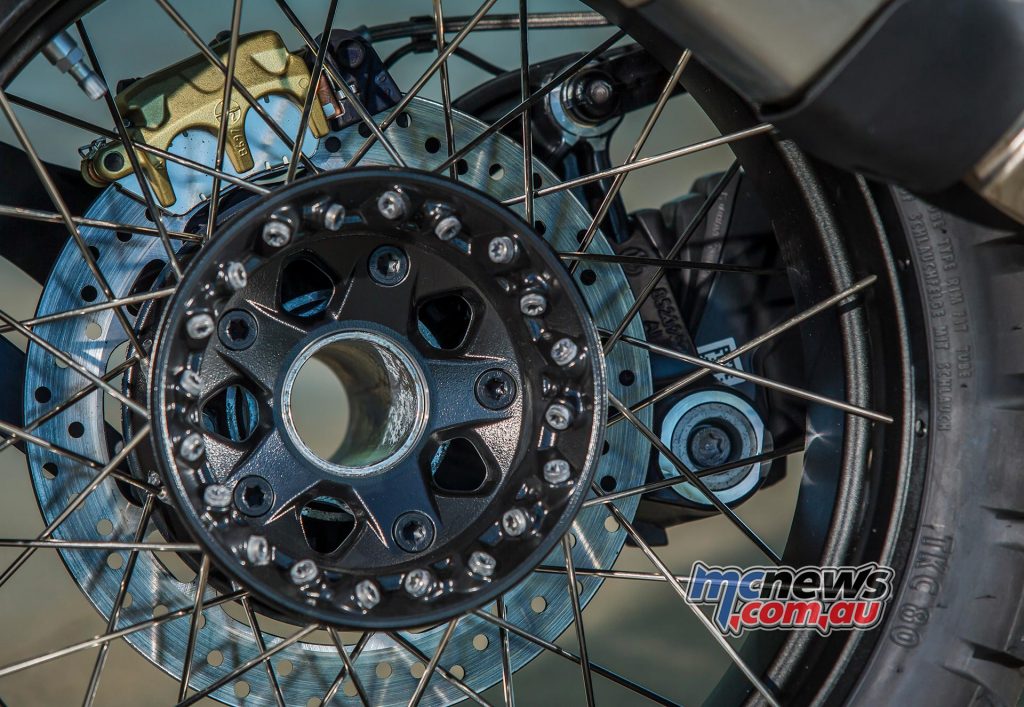
For such a big bike, it does handle the small jumps off the erosion banks quite well. Obviously, it’s a nice landing when you land rear wheel first and the bike soaks up a fair amount of the harshness expected. Jumping a motorcycle of this capacity and weight, is something that does not come all that naturally at first!
Once again, I was playing with the ESA in these conditions and found that while demanding the maximum from the suspension over erosion humps and similar, the off-road setting was definitely the pick.
Keep in mind the Telelever front end does offer a slightly different feel in the front-end than the more traditional set up of front forks. The only place that I felt slightly uncomfortable in this respect was in the middle part of some dirt corners. If you ran over a rough section or some small rocks the front end just felt slightly vague.
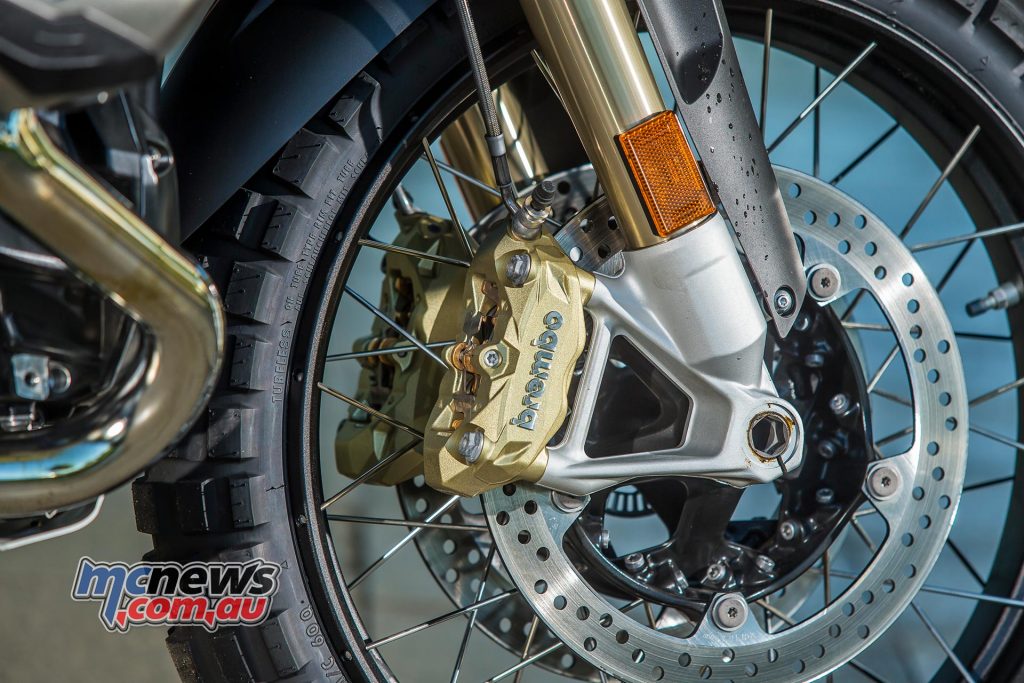
Where the system does come into its own however is on the road, particularly when carrying luggage or a pillion, as the system is inherently resistant to any excessive front end dive, which makes these BMW’s rail the tight stuff like little else.
We then decided to pick up the pace and hit the tarmac of the Yarra ranges and beyond. Looking at the GS Rallye X you could be lured into thinking that this would not be the weapon of choice in these circumstances, but make that decision at your own peril.
On tight twisty sections I wouldn’t think that too many people on any sports bike would out-ride one of these bikes. The acceleration that is produced is ample to push the “off road” tyres to their limit. There’s lots of squirming, but they give great feedback.
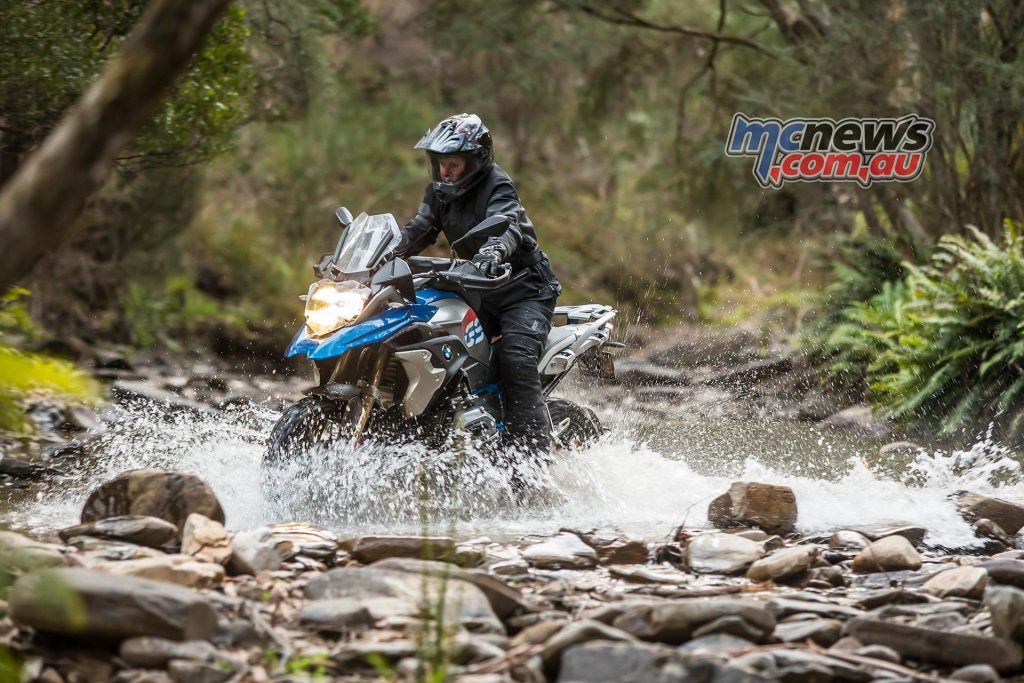
I got to ride on roads that my old boy had always raved about, on a bike that he was always going to buy, which was pretty cool. The gearbox with the aid of the up and down quick shift is an absolute dream on the tar and makes you feel even more like a racer.
In conclusion, I was amazed at where this bike can take you. Although I am an experienced motorcycle rider I have never ridden an adventure bike before this. It gives you a bolstered sense of confidence.
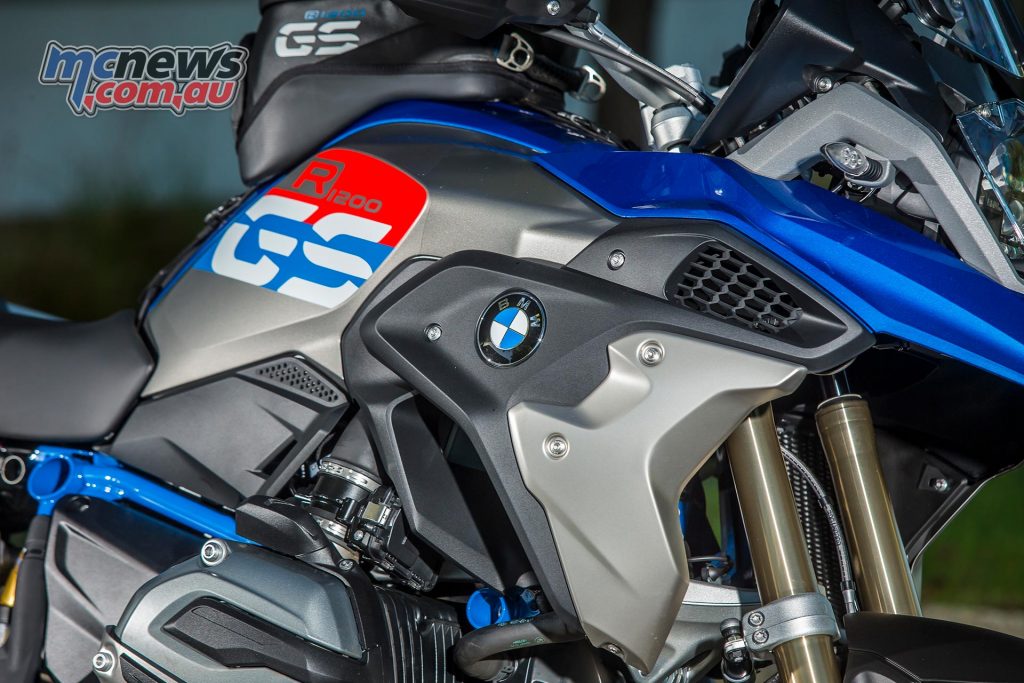
The super smooth and powerful engine is a pleasure to be in control of, and the standard list of inclusions that you receive with the Rallye X go a long way to justifying its $27,250 RRP price tag.
For the vertically challenged rider, the extra travel may make stopping and low speed stuff a little bit of a concern. BMW do offer a smaller seat and a one-piece seat with an extra low seat height option as an accessory if this is a problem.
The electronics work a treat and there is ample ability to customise and find a setting that works for nearly all levels of ability and experience. About the biggest negative I found on this launch was the mundane ride back into the metropolis of Melbourne. My horizons have expanded and I can’t wait to experience more of this big-bore adventure touring caper, I’m converted!

2017 BMW R 1200 GS Rallye X Specifications
- Four stroke, two cylinder, horizontally opposed Boxer, DOHC, four-valves per cylinder
- Capacity – 1170cc
- Bore x stroke – 101 x 73mm
- Cooling – Liquid/Air
- Compression ratio – 12.5:1
- Ignition – BMS-K
- Clutch – Hydraulic
- Power – 92kW(125hp)@7750rpm
- Torque – 125Nm(92ft-lbs)@6500rpm
- Transmission – Constant mesh six-speed gearbox with helical gear teeth
- Final Drive – Shaft
- Fuel capacity – 30L
- Chassis – Two-section frame, load bearing engine, cast aluminium single-sided swing arm
- Castor – 99.6mm
- Steering head angle – 64.5 degrees
- Front suspension – BMW Telelever, ESA, 210mm travel
- Rear suspension – BMW EVO Paralever, ESA, 220mm travel
- Front brakes – Dual 305mm discs, Brembo four-piston calipers, BMW Motorrad Integral ABS Pro
- Rear brake – 275mm disc, two-piston caliper, BMW Motorrad Integral ABS Pro
- Front wheel & tyre – 3.00 x 19in, 120/70 – 19
- Rear wheel & tyre – 4.50 x 17in, 170/60 – 17
- Dimensions
- Wheelbase – 1510mm
- Seat height – 890mm
- Height – 1450mm
- Width – 980mm
- Length – 2250mm
- Wet weight – 260kg























